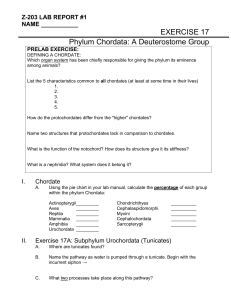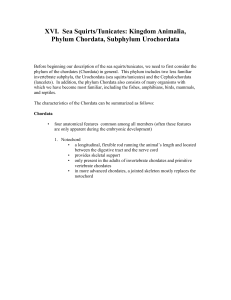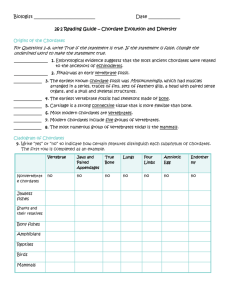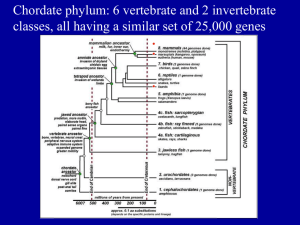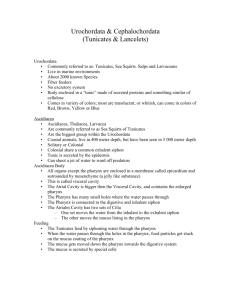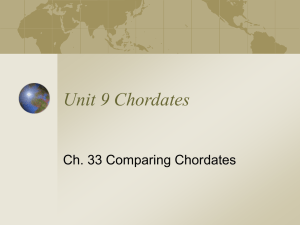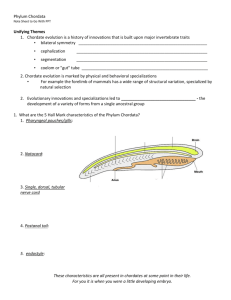Chordate Worksheet
advertisement
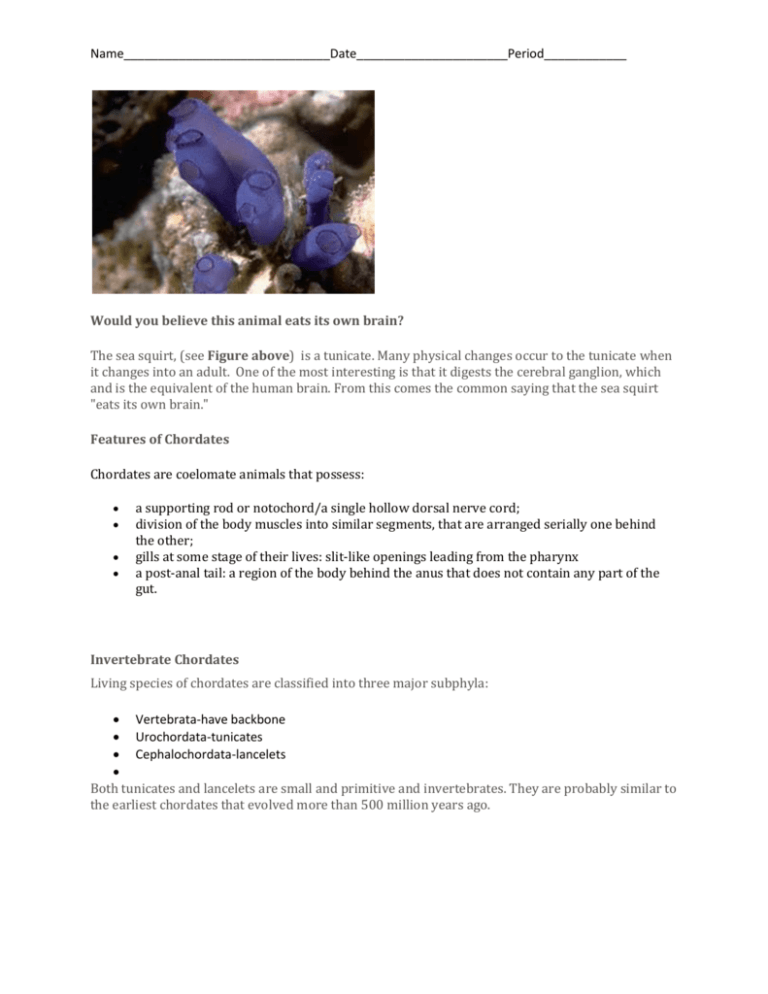
Name______________________________Date______________________Period____________ Would you believe this animal eats its own brain? The sea squirt, (see Figure above) is a tunicate. Many physical changes occur to the tunicate when it changes into an adult. One of the most interesting is that it digests the cerebral ganglion, which and is the equivalent of the human brain. From this comes the common saying that the sea squirt "eats its own brain." Features of Chordates Chordates are coelomate animals that possess: a supporting rod or notochord/a single hollow dorsal nerve cord; division of the body muscles into similar segments, that are arranged serially one behind the other; gills at some stage of their lives: slit-like openings leading from the pharynx a post-anal tail: a region of the body behind the anus that does not contain any part of the gut. Invertebrate Chordates Living species of chordates are classified into three major subphyla: Vertebrata-have backbone Urochordata-tunicates Cephalochordata-lancelets Both tunicates and lancelets are small and primitive and invertebrates. They are probably similar to the earliest chordates that evolved more than 500 million years ago. Name______________________________Date______________________Period____________ Tunicates There are about 3,000 living species of tunicates (see Figure below). They inhabit shallow marine waters. Larval tunicates are free-swimming. They have all four defining chordate traits. Adult tunicates are sessile. They no longer have a notochord or post-anal tail. Tunicates (Urochordata). Tunicates are one of two subphyla of invertebrate chordates. Adult tunicates are barrel-shaped. They have two openings that siphon water into and out of the body. The flow of water provides food for filter feeding. Tunicates reproduce sexually. Each individual produces both male and female gametes. However, they avoid self-fertilization. Tunicates can also reproduce asexually by budding. Lancelets There are only about 25 living species of lancelets. They inhabit the ocean floor where the water is shallow. Lancelet larvae are free-swimming. The adults can swim but spend most of their time buried in the sand. Like tunicates, lancelets are filter feeders. They take in water through their mouth and expel it through an opening called the atriopore (see Figure below). Lancelets reproduce sexually and have separates sexes. Question: Unlike tunicates, lancelets retain all defining chordate traits in the adult stage. Can you find them? Name______________________________Date______________________Period____________ Practice 1. List three features of chordates. 1. 2. 3. 2. How do invertebrate chordates differ from vertebrate chordates? 3. How many species of invertebrate chordates have been identified? (add tunicates and lancelet species) 4. What are the two subphyla of invertebrate chordates? 5. Describe the subphylum Urochordata. Give three characteristics. 6. Describe the subphylum Cephalochordata. Give three characteristics. Refect 1. List 3 things learned about chordates from this activity. 2. In your opinion, why do you think it is important to learn about other species and their body plans? There are no right or wrong answers...just your opinion.
